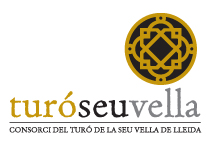In 1193, the cathedral chapter hired Pere de Coma, the master builder and architect of the project and head of the preparations that were necessary to begin construction.
The works started at the east end of the church and continued to the naves until it reached the Romanesque facade. The dome was the last part to be built. The first stone was placed on 22 July 1203 and was dedicated for worship 75 years later. At the beginning of the 13th century work began on the Canonical House, with their sizes being gradually increased.
Coinciding with the completion of the church in the late 13th century, the Canonical House expanded its volume and construction began on the cloister. The 14th century would have the biggest architectural projects: the cloister, much of the bell tower, the Gothic facade of the Apostles and the church’s main chapels. The following century would be marked by the crowning of the bell tower and the final configuration of the canonical spaces.
The building push of the 14th and 15th century would be accompanied by ornamentation: main retable, alters, choir, pulpit, stained glass, paintings, etc. Once the work was finished, subsequent interventions would be for improvement or embellishment.





